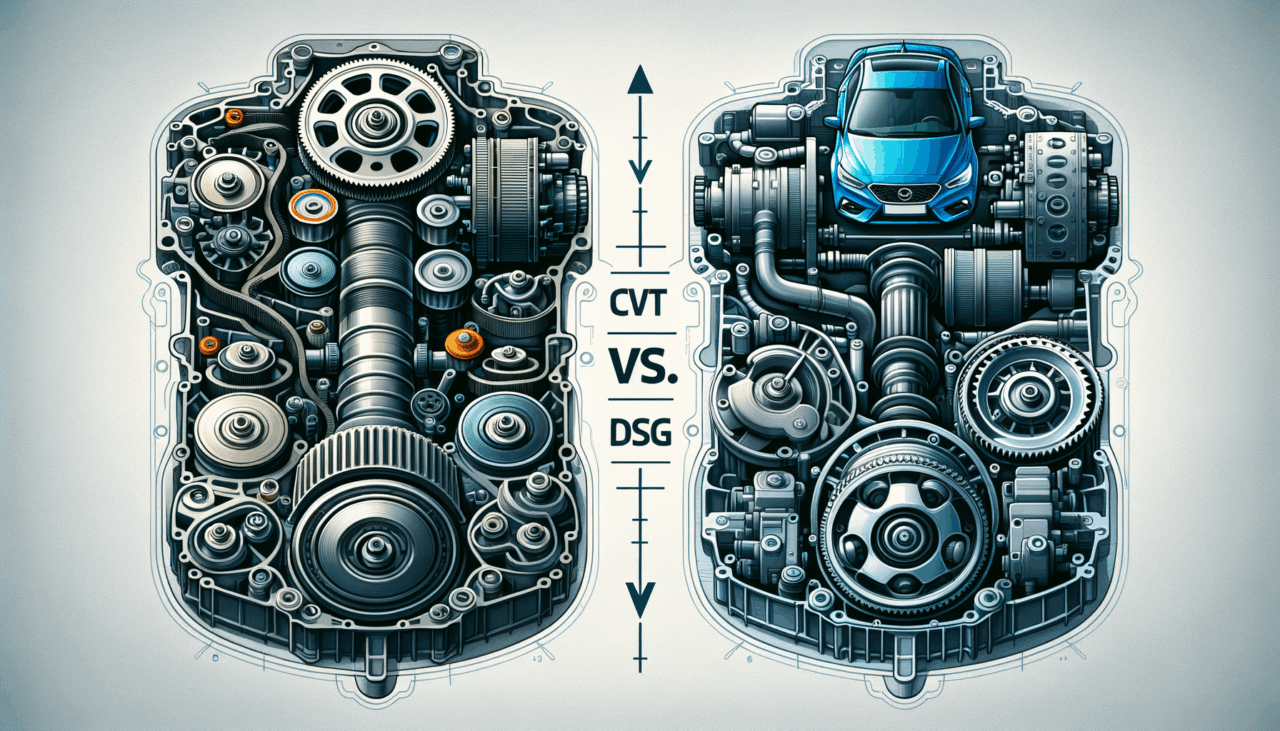CVT vs. DSG – Which Transmission Lasts Longer?
When it comes to car transmissions, two contenders often take center stage in the modern automotive arena: the Continuously Variable Transmission (CVT) and the Direct Shift Gearbox (DSG). As the Yoruba adage goes, “When two elephants fight, it is the grass that suffers.” In this case, drivers are the grass, trying to navigate the complexities of which transmission might serve them best in the long run. So, let’s dive deep into the world of gears and pulleys, clutches and shifts, to unravel which transmission might just be the tortoise to win the longevity race.
Characteristics of CVT
-
Smooth Operator: CVTs are known for their seamless acceleration, akin to a river flowing without interruption. This is because they use a system of pulleys and belts, allowing for infinite gear ratios. No more jerking shifts, just a smooth ride.
-
Fuel Efficiency Expert: By maintaining the engine in its optimal power range, CVTs often provide better fuel efficiency. “A goat does not eat into a hen’s stomach,” meaning, what belongs to you is yours; similarly, CVTs ensure you get the most out of every drop of fuel.
-
Simplified Mechanics: With fewer moving parts than traditional automatics, CVTs can be less prone to mechanical failure. However, this simplicity can be a double-edged sword, as we shall see.
-
Performance Trade-off: While they are efficient, CVTs are not always the best for performance enthusiasts. They can sometimes feel lackluster compared to the punchy shifts of a DSG. It’s like expecting a bicycle to outrun a motorcycle.
Characteristics of DSG
-
Lightning-Fast Shifts: DSGs are famed for their quick and precise gear changes, achieved through dual clutches that pre-select the next gear. It’s like having two chefs in the kitchen, each ready with the next course.
-
Performance Powerhouse: For those who crave the thrill of driving, DSGs offer a more engaging experience. They deliver power efficiently, making them a favorite for sports models.
-
Complex Engineering: While the DSG’s engineering marvel provides a superior driving experience, its complexity can sometimes lead to higher maintenance needs. “The bigger the head, the bigger the headache,” as they say.
-
Fuel Economy: DSGs also offer commendable fuel efficiency, though generally not as stellar as the CVT. It’s a case of “you cannot shave a man’s head in his absence,” as you must decide which aspect is most important to you.
Comparative Table: CVT vs. DSG
| Feature | CVT | DSG |
|---|---|---|
| Smoothness | Exceptionally smooth | Smooth but with noticeable shifts |
| Fuel Efficiency | Higher | Moderate to High |
| Performance | Moderate | High |
| Complexity | Less complex | More complex |
| Cost | Generally lower initial cost | Typically higher initial cost |
| Maintenance | Can be costly if major issues arise | Regular maintenance required |
| Longevity | Potentially lower due to belt wear | Potentially higher if well-maintained |
Which Transmission Lasts Longer?
The million-naira question, “Which transmission lasts longer?” is akin to asking, “Which fish swims faster?” It depends on various factors, including maintenance, driving conditions, and usage habits.
CVT Longevity: In theory, CVTs should last longer due to fewer components. However, when they do fail, repairs can be costly. The belt and pulley system, while efficient, may wear out faster under high stress or improper use.
DSG Longevity: DSGs, with their robust build, can last longer if maintained properly. Regular oil changes and software updates are crucial. Like a well-tended garden, the more care you give, the more it rewards you.
In conclusion, whether you’re drawn to the CVT for its smooth, fuel-efficient journey or the DSG for its performance prowess, the longevity of either transmission will ultimately depend on how well you maintain it. Remember, “No matter how far the stream flows, it never forgets its source.” Maintain your transmission with care, and it will serve you for many kilometers to come.

Comments (0)
There are no comments here yet, you can be the first!